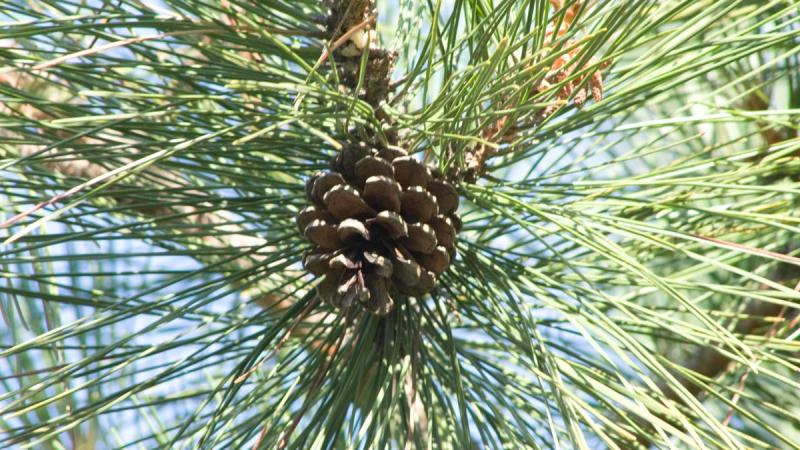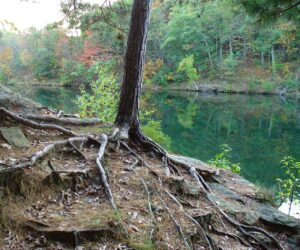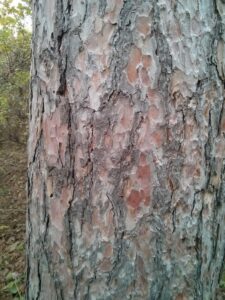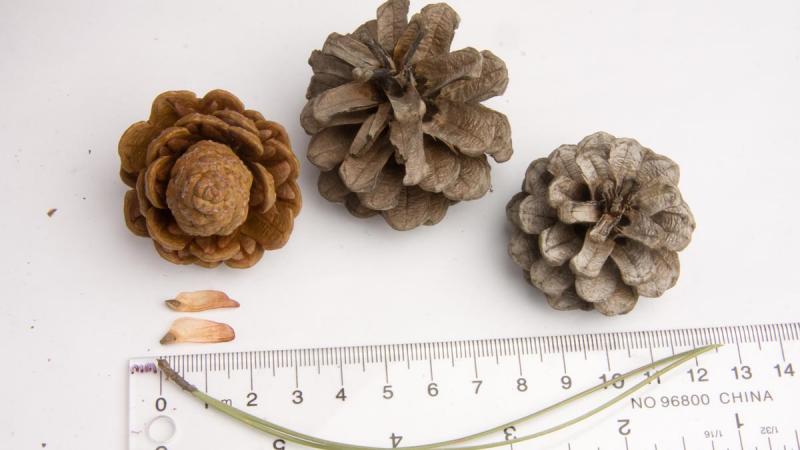
Ranging from Newfoundland to Manitoba, the mighty red pine is a long-lived, evergreen conifer tree prized for its attractive appearance, high-quality wood, and strong roots. While this tree species is often called Norway pine (possibly originating from a misidentification by early colonizers), the red pine is native to Canada.
Interestingly, mature red pines have a thick, fire-resistant bark that can survive exposure to surface fires. This is important because fire exposure is a key part of the species’ regeneration. Since red pines do not like shade and are sensitive to vegetative competition, fires actually help create an environment where younger trees can thrive – particularly once the ash layer is reduced to shallow, sandy soil.
In addition to supporting saplings, fires promote root and shoot growth in older red pine specimens. They also prompt the trees to increase resin production, which equips the red pine to heal any fire scars before opportunistic insects and fungi can attack exposed wood. Nature truly is amazing!
Learn more about this interesting tree species and how to identify it below!
About Red Pine Trees (Pinus resinosa)

Living for 200-400 years and reaching heights of 75 feet in ideal growing conditions, red pines make attractive additions to your property. They are prized for their tall, straight growth and are ideal for use as windbreaks due to their strong lateral root system. In addition, they are often utilized as snow breaks and to support watershed protection.
Once established, red pine trees are often a predominant overstory plant. They can thrive individually or in larger stands, provided understory vegetation is limited. You will often find them growing on low ridges next to lakes and swamps, on rocky sites, in sand plains, or on dry slopes where other trees struggle.
How to Identify Red Pine Trees

Red pine trees can be identified by their size, shape, branches, bark, needles, and cones.
Size: 66-115 feet tall with a trunk 3 feet in diameter at maturity.
Shape: Tall, straight trunk with a conical shape when young that can become more irregular over time. The crown often forms into a narrow dome or becomes more flat-topped as the tree matures.
Branches: Lower branches grow horizontally or droop slightly downward with foliage clustering mostly at the tips of the branch. Upper branches are more densely foliated and are often upcurved.
Bark: Flakey and red-brown to pink-grey in colour when young, becoming more plated, scaly, flat, and reddish at maturity. However, bark at the base of mature trees is thick and grey-brown with red plates visible higher up the tree.
Needles: 4-6 inches long, shiny, dark green with two needles per fascicle. Needles are pointed and snap easily when bent.
Cones: 4-7 cm in length, oval, and almost stalkless. Each scale on the cone is slightly thicker at its tip than at its base. Cones often persist on the tree for several months after seeds are released in autumn.
As red pine trees are “self-pruning”, dead branches often fall off by themselves. In older red pine specimens it is not uncommon to observe that the tree has very few or no branches for long lengths on its trunk.
Wildlife Value of Red Pine Trees
In addition to adding visual appeal to landscaping, protecting properties from wind and snow, and reducing soil erosion, red pine trees have high wildlife value. Deer, moose, snowshoe hares, bears, porcupines, coyotes, and many birds seek shelter in red pines.
Songbirds, squirrels, mice, and chipmunks also eat the seeds, while snowshoe hares will eat the bark, needles, and saplings.
Harvesting Seeds from Red Pine Trees
To harvest red pine seeds, look for trees that are between 50 and 150 years old, ideally from trees in a dense stand. Select cones that are tightly closed and brown in colour. Place the cones in a paper bag in a warm, dry spot indoors. After a few days, separate the scales and remove the seeds.
Seeds can be planted immediately and do have a dormant period before germinating. However, if you cannot plant your red pine seeds right away, be sure to store them in a cool, dry place in a sealed container where they can remain viable for up to 30 years!

Source: Confederation College
Learn More About Trees and Forest Restoration
Want to learn more about ways you can support forest restoration at home? Then take a look at our Forest Restoration Nurseries resources and free Community Nurseries guide – proudly brought to you by the Knowlesville Art and Nature Centre and The Tree Project!
Stay in touch with us and learn about upcoming events on the Knowlesville Art and Nature Centre Facebook and Instagram pages!
